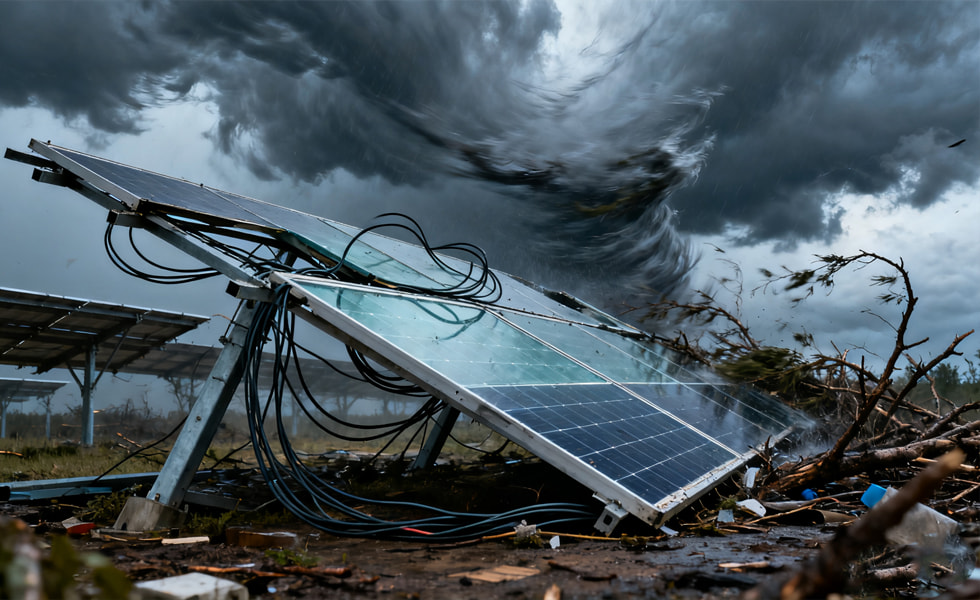
As typhoons unleash their fury with howling winds and torrential rains, vast solar arrays—those symbols of green energy—face their ultimate test. Can these meticulously engineered systems withstand nature’s violent outburst? From the glass surfaces of photovoltaic panels to the metal skeletons of mounting structures, every component battles immense forces that threaten to dismantle years of progress in renewable energy in a single storm.
The assault begins with the wind. Gusts exceeding 50 meters per second generate destructive pressures capable of twisting metal and shattering dreams. Solar panels, typically resilient under sunlit skies, now confront invisible threats: micro-cracks that silently spread across cells, compromising long-term efficiency; delamination where moisture intrudes; and potential glass breakage from wind-borne debris. Meanwhile, the mounting structures endure cyclic loading—a relentless back-and-forth strain that tests every weld, bolt, and connection. One weakened joint, one corroded anchor, can trigger catastrophic failure. And let’s not forget the corrosive salt spray carried inland, seeping into electrical connections, or the driving rain that seeks out any vulnerability in junction boxes and cables, raising the risk of short circuits and ground faults.
Yet, the response to this challenge is as sophisticated as the threat is formidable. It starts where all great engineering does: in the design. Projects in coastal regions incorporate dynamic wind load calculations, lowering tilt angles to minimize wind capture and reinforcing critical structural nodes. We see bifacial double-glass solar panels gaining popularity for their superior mechanical strength, acting as armored shields against the storm. The hidden heroes are often in the details—deeper concrete foundations that anchor the structure to the earth, anti-loosening nuts marked with torque indicators for precise maintenance, and strategic drainage holes in module frames to prevent water accumulation.
When a typhoon warning flashes, technology takes command. Smart monitoring systems, fed by on-site meteorological stations, can trigger automated protocols. In some advanced setups, tracking systems rotate arrays into a defensive, wind-shedding position. Behind the scenes, the integrated energy storage system proves its immense value beyond daily arbitrage. It stabilizes the local grid, provides backup power for critical monitoring equipment, and stands ready to become a lifeline for emergency power post-storm. This combination of robust hardware and intelligent software transforms a static power plant into a resilient, adaptive asset.
Every typhoon season leaves behind critical lessons. The surviving arrays are those where drainage channels prevented soil erosion, where sealed cable trays blocked corrosive salt mist, and where rigorous periodic inspections had identified and rectified the smallest weaknesses. The integration of solar with storage is no longer just an economic consideration; it is a strategic defense, enhancing the system’s ability to operate independently and recover swiftly. The question is not if typhoons will come, but how our clean energy infrastructure will evolve to meet them. Through resilient engineering, intelligent foresight, and an unwavering commitment to maintenance, our solar power systems will not just survive—they will stand firm, powering our world through the storm.
